King Salman International Stadium
| Capacity | 92 760 |
|---|---|
| Country | Saudi Arabia |
| City | Riyadh |
| Clubs | – |
| Category | Design awaiting implementation |
| Cost | ? |
| Construction | 2025–2029 |
| Design | Populous |
Advertisement
King Salman International Stadium – design description
How did the King Salman International Stadium project come about?
On October 4, 2023, the process of selecting a host for the 2034 World Cup kicked off. Due to FIFA's policy of rotating continents, the choice was limited to countries from the Asian zone and Oceania. Saudi Arabia officially applied to host the event.
Australia was also considering candidacy, but on October 31, 2023, when the deadline for submitting bids passed, the Australian football federation announced that the country would not bid for the 2034 World Cup. Saudi Arabia thus practically secured the organization of the 2034 World Cup.
Since Saudi Arabia lacked large stadiums to host the World Cup matches, the country had to prepare a large number of projects to build new stadiums or expand existing ones. The full list of 15 venues proposed for the tournament was announced on July 31, 2024, when the so-called “bid book” was published.
When was the King Salman International Stadium project announced?
Just three days before the publication of the “bid book”, on July 28, 2024, the Royal Commission for Riyadh City, together with the Saudi Ministry of Sports, announced a project to build a huge new football stadium in Riyadh for more than 92,000 spectators.
The architectural concept for the new stadium was chosen from among six proposals submitted by international design companies. The winning concept was created by Populous, a well-established studio specializing in the design of sports facilities.
The stadium was to be named after Saudi Arabia's incumbent King Salman (King Salman International Stadium) and was to be the primary venue for the World Cup, hosting the opening match and the final.
Where is the King Salman International Stadium planned to be built?
The stadium is to be built in the northern part of Riyadh, on the road leading to the international airport. Four days before the stadium project was revealed, the construction of a huge park (King Abdulaziz Park) was also announced. The park will cover 430 hectares and is to be part of the Green Riyadh project, an ambitious plan to create new green spaces in Riyadh, including the planting of 7.5 million trees.
The new stadium is to stand in the northern corner of this park, becoming part of the entire development. Previously, the Riyadh Stadium was planned to be built on the same site (it was a design for a new 22,000-seat stadium, created for the 2027 Asian Cup).
When will the King Salman International Stadium be built?
Construction of King Salman International Stadium is expected to begin in 2025, with completion scheduled for late 2029.
What will King Salman International Stadium be like?
The stadium's design draws inspiration from the landscapes of Saudi Arabia, but primarily symbolizes a seed that breaks the surface of the earth as it sprouts so that it can soar. The sprouting seed can be read in a broader context, as a reference to the transformation Saudi Arabia is undergoing (through a series of ambitious investments, but also on social grounds), as well as to the country's growing commitment to sports.
The stadium will have a capacity of 92,760 spectators, which will not only make it the largest in the country, but also place it among the largest football venues in the world. The auditorium will be divided into an expansive upper and lower level, with additional tiers in the middle section for VIP seating. A panoramic video screen will stretch along the top of the stands.
The stands are to be equipped with a cooling system. Climate control will be facilitated by a roof that, in addition to protecting against possible rainfall, will also shield against the scorching sun.
The stadium's exterior cladding will consist of more than a dozen segments designed to imitate cracked earth. These elements will form both the façade and the roof over the stands, and will be covered with greenery in many places to make the facility blend in with the nearby park. There will be a viewing path on the roof to enjoy the surroundings.
What will be included in the surroundings of King Salman International Stadium?
Additional sports facilities will be built in the vicinity of the stadium, such as football fields, an athletics track, small basketball and volleyball courts, as well as sports arenas and an indoor Olympic-sized swimming pool. The surrounding area will also include commercial facilities. Buildings located near the stadium will replicate the cracked earth theme.
The stadium will be built on King Salman Road, within a park called King Abdulaziz Park. It will be a new, huge (430 hectares) green area, at the center of which is to be a botanical garden with more than 200 species of local flora.
The stadium and park will be located in the northern part of Riyadh, near Princess Nora bint Abdul Rahman University and the Expo 2030 facilities, and will be accessible by metro. The stadium will be relatively close (about 10 km) to the international airport.
What role will King Salman International Stadium play?
King Salman International Stadium will be the largest stadium in Saudi Arabia and is to serve as the national stadium. The country's national team is to play there frequently, and various other prestigious sports and cultural events are to be held there as well. During the 2034 World Cup, the stadium will host, among other things, the opening match and the final of the tournament.
In addition, the facility is expected to be bustling with activity all the time, even when no events are taking place, and visitors are expected to be attracted by a variety of commercial establishments. The stadium will be owned and operated by the Saudi Ministry of Sports.
The stadium will feature an unconventional, extravagant design, and aims to comply with modern standards and sustainability concepts. Due to its original character and large size, it may become a recognizable icon of sports architecture and one of the symbols of Riyadh, influencing the prestige of the city and improving the quality of life of its residents.
Advertisement
Renderings
-
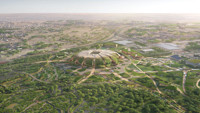
11.2024 © Populous 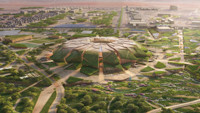
11.2024 © Populous 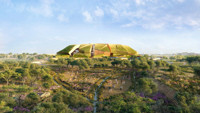
11.2024 © Populous 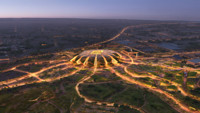
11.2024 © Populous 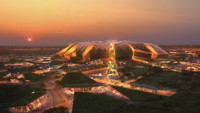
11.2024 © Populous 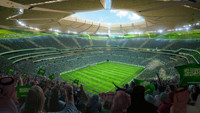
11.2024 © Populous 
07.2024 © Ministry of Sport 
07.2024 © Ministry of Sport 
07.2024 © Ministry of Sport 
07.2024 © Ministry of Sport 
07.2024 © Ministry of Sport 
07.2024 © Ministry of Sport 
07.2024 © Ministry of Sport 
07.2024 © Ministry of Sport 
07.2024 © Ministry of Sport 
07.2024 © Ministry of Sport 
07.2024 © Ministry of Sport 
07.2024 © Ministry of Sport 
07.2024 © Ministry of Sport 
07.2024 © Ministry of Sport 
07.2024 © Ministry of Sport 
07.2024 © Ministry of Sport 
07.2024 © Ministry of Sport 
07.2024 © Ministry of Sport 
07.2024 © Ministry of Sport 
07.2024 © Ministry of Sport 
07.2024 © Ministry of Sport 
07.2024 © Ministry of Sport 
07.2024 © Ministry of Sport 
07.2024 © Ministry of Sport 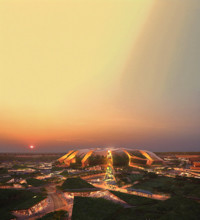
07.2024 © Saudi Arabian Football Federation 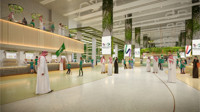
07.2024 © Saudi Arabian Football Federation 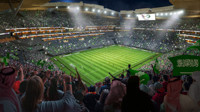
07.2024 © Saudi Arabian Football Federation
07.2024:
* * *
Related news
2024
-
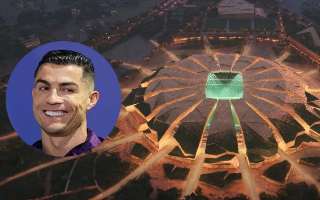
Ronaldo: Stadiums for the 2034 World Cup? “The best tournament in history”
In 2030, the FIFA World Cup will make its way to Portugal, among other countries. Yet, Al-Nassr’s superstar, Cristiano Ronaldo, has already sparked controversy—likely not without a price tag—by declaring that the tournament in Saudi Arabia will be the best in history. Ronaldo also praised the stadiums, though at this point, they don’t even exist.
-
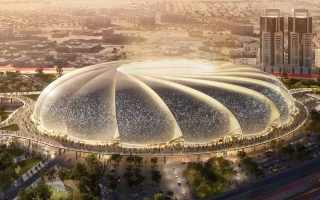
WC 2034: High rating for Saudi Arabia as a potential host
FIFA has published a report evaluating Saudi Arabia's bid to host the 2034 World Cup, giving the country a higher score on bidding requirements than the winning bid for the 2026 edition, while also classifying the human rights risk assessment as "medium."
-

Saudi Arabia: King Salman Stadium, a sprouting seed of sport and culture
The Royal Commission for Riyadh City and the Ministry of Sports have unveiled the design for King Salman Stadium and its accompanying master plan, crafted by Populous. This venue is set to host the final of the 2034 FIFA World Cup.
-

Saudi Arabia: Saudis unveil amazing stadiums for 2034 FIFA World Cup
Saudi Arabia has officially released details of the 2034 World Cup. The presentation took place in Paris, where plans to use state-of-the-art stadiums in five cities were shown. Will Saudi Arabia manage to square their bid with the international football community?

 StadiumDB
StadiumDB